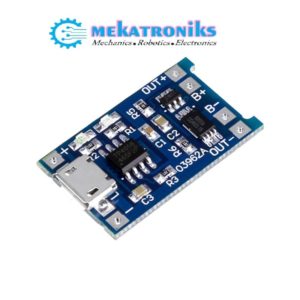BMS 3S 60A Battery Management System With Protection
About
- 3S 60A 12.6V 18650 Charger
- PCB BMS Protection Board
- Li-ion Lithium Battery Charger Protection Board
- Balance Charging Module
₨ 430
BMS 3S 60A With Protection
- 3S 60A Protection Charging Board lithium battery protection board; High Quality; Compact size and lightweight; High-accuracy voltage detection circuit; fine workmanship and durable; stable performance.
- Multiple Protections: During charging and discharging, it has overcharge protection, over discharge protection, and overcurrent Protection, short circuit protection; Low Standby current: MOS transistor can control the battery charge and discharge, low standby current consumption.
- Applications: It can be used in electric drills, sprayers, LED lights, low power reverse Charge and discharge batteries of transformers and other products.
- This product is used to charge/discharge three groups of lithium batteries in series, and each group can connect multiple lithium batteries in parallel.

3S 60A Protection Charging Board Product Description
Product parameters:
Charging voltage : 12.6V-13V
Maximum working current : 60A ( heat dissipation conditions are very good )
Continuous charging current ( upper limit ) : 20A
Continuous discharge current ( upper limit ) : 40A
Overcurrent protection : 125A
Overcharge detection : 12.8V ( for 3 groups of batteries )
Overcharge release : 12.3V ( for 3 groups of batteries Over discharge detection : 2.4V ( for 1 group of batteries ) en.wikipedia.org
Over discharge release : 3.0V ( for 1 group of batteries )
Short circuit protection : Yes
Working temperature : -40℃ ~ +85℃
Storage conditions : -40℃ ~ +125℃

BMS will also control the recharging of the battery by redirecting the recovered energy back into the battery pack typically composed of a number of battery modules, each composed of a number of cells
Battery thermal management systems can be either passive or active, and the cooling medium can either be air, liquid, or some form of phase change.
Air cooling is advantageous in its simplicity. Such systems can be passive, relying only on the convection of the surrounding air, or active, using fans for airflow. Commercially, the Honda Insight and Toyota Prius both use active air cooling of their battery systems. The major disadvantage of air cooling is its inefficiency. Large amounts of power must be use to operate the cooling mechanism, far more than active liquid cooling.










There are no reviews yet.